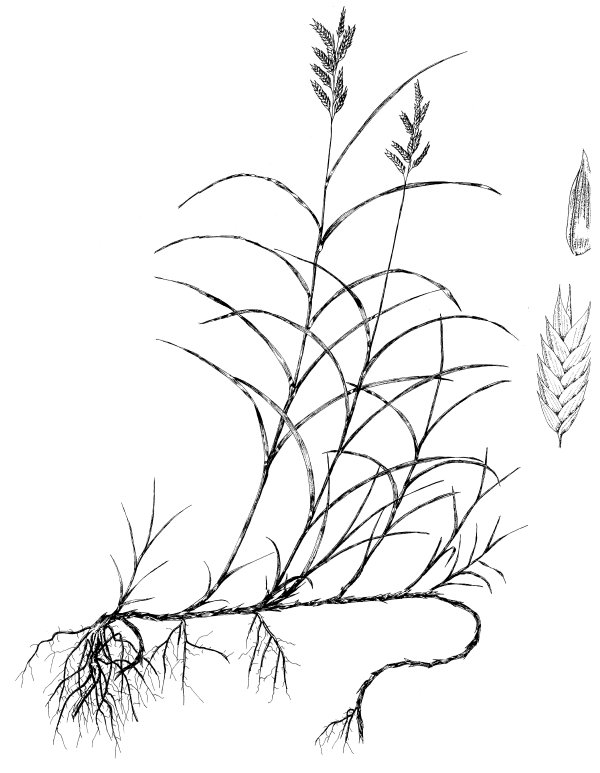
Eragrostis reptans (Michx.). Creeping Lovegrass
Habit: Dioecious, extensively creeping, mat forming annual. Culms: Branching, creeping, rooting at the nodes, with erect short flowering branches. Blades: Spreading, 1-3 cm. long, 1-3 mm. wide, usually flat, usually pubescent. Sheaths: Very short, loose, margins ciliate, mostly minutely pubescent. Ligule: A ring of hairs less than 1 mm. long. Inflorescence: Panicles many, usually capitate, mostly 1-2 cm. long, with few-several spikelets on short pedicels. Spikelets: Strongly compressed, crowded, 5-36-flowered, 5-22 mm. long; singly or in fascicles, the flowers unisexual, linear, elongating and curving, light green turning pale. Glumes: 2, unequal, the first about half as long as the second which is 1.5-2 mm. long, scabrous on the nerve, acute, hyaline. Lemmas: Closely imbricate, acuminate, sparingly villous or nearly glabrous, 2-3 mm. long, usually broad, 3-nerved, the lateral nerves prominent, keel scabrous. Palea: Palea of pistillate floret about half as long as the lemma, of the staminate floret as long as the lemma, curved, ciliate. Anthers: 1.5-2 mm. long before dehiscence. Fruit: Grain ovoid, about 0.5 mm. long. Habitat: Sandy soil, riverbanks. July-October. Kansas Range: Saline and Chautauqua counties.